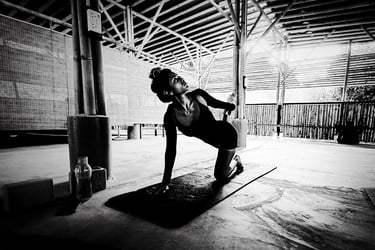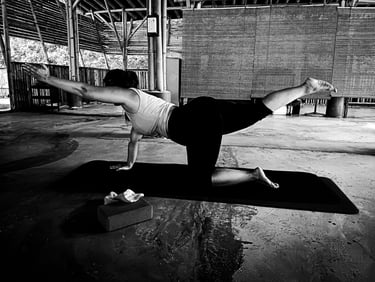Movement Re-patterning for Healing
Tiger Pose
When the extended arm in Balancing Table reaches back to hold the ankle of the lifted leg—a variation known as Tiger Pose—the dynamics shift again.
By introducing both a backbend and a twist, the body’s centre of gravity is altered, and the challenge to balance becomes more complex.
The entire back body—including the gluteal, thigh, and spinal muscles—activates to support the position. Meanwhile, the front of the abdomen must work harder to counterbalance the backbend and maintain core control.
Movement repatterning—also known as neuromuscular retraining or functional re-patterning—aims to improve the quality of movement by optimising muscle recruitment and coordination. This approach can also be a valuable method for breaking habitual movement patterns or retraining the nervous system during recovery—for example, after an accident or injury.
Awkward poses like Balancing Table can serve as powerful tools in this process, especially in cases of back pain. However, the lower back’s guarding reflex often takes time to fully release. Consistent practice, paired with coordinated breathing, is key to restoring both ease and stability.
Repatterning is the central feature of many yoga poses where the progressive contraction and lengthening of muscles is synchronised with breath. This practice not only supports mobility and strength, but also helps regulate the autonomic nervous system. As breath slows and deepens—especially during exhalation—it can activate the parasympathetic branch (often referred to as the "rest-and-digest" response), thereby lowering heart rate and promoting a state of relaxation.




More Insights
